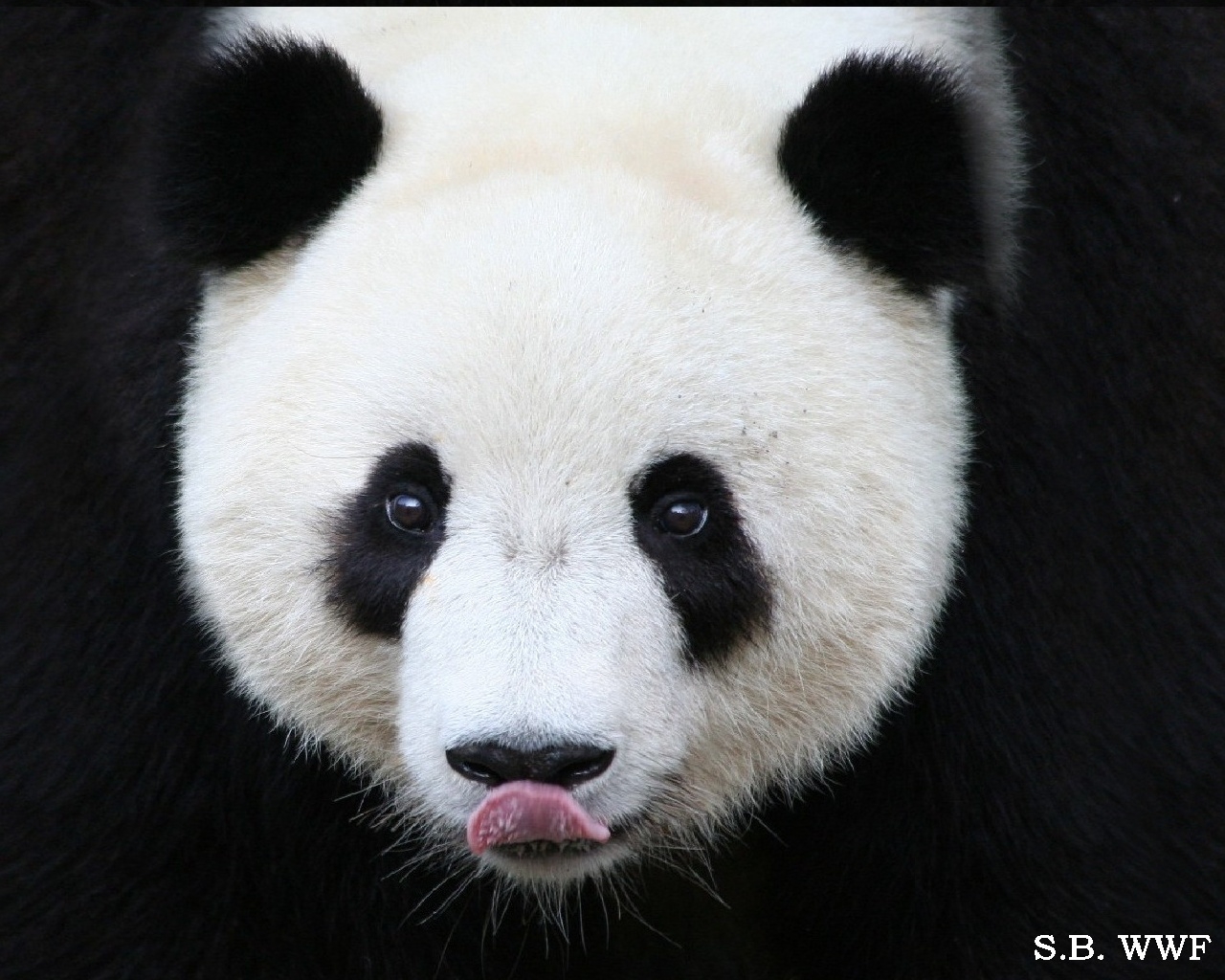

Giant pandas have large molar teeth and strong jaw muscles for crushing tough bamboo. The pandas thick, wooly coat keeps it warm in the cool forests of its habitat. Pandas have black fur on their ears, eye patches, muzzles, legs and shoulders. The giant panda has a body typical of bears. Female pandas are generally smaller than males and can occasionally weigh up to 100 kilograms (220 pounds). Male pandas can weigh up to 115 kilograms (253 pounds). Adult pandas measure around 1.5 metres long and around 75 centimetres tall at the shoulder. The Giant Panda has a black-and-white coat. It also estimated that around 1,590 pandas are living in the wild. According to the latest report, China has 239 giant pandas in captivity (128 of them in Wolong and 67 in Chengdu) and another 27 pandas living outside the country. The Giant Panda is an endangered species. Many of the bamboo areas which are vital for the Pandas diet and survival are being cut down by people who then build farms there. The mist shrouded mountain forests of China, have slowly disappeared over the last century.

Pandas once lived in lowland areas, however, farming, forest clearing and other development now restrict giant pandas to the mountains. Giant pandas live in a few mountain ranges in central China, in Sichuan, Shaanxi and Gansu provinces. Pandas are easily recognized by their large, distinctive black patches around the eyes, over the ears and across their round body. Giant Pandas are one of the rarest mammals in the world. This means that the species is facing a very high risk of extinction in the wild.The Giant Panda (black-and-white cat-foot) (Ailuropoda melanoleuca), is a mammal classified in the bear family, Ursidae, native to central-western and southwestern China. According to the latest assessment of the wild population, the panda bear is listed as Endangered. Extinct, Extinct in the wild, Critically endangered, Endangered, Vulnerable, Near threatened, Least concern, Data deficient and Not evaluated. The IUCN Red List of Threatened Species used different categories. China has today created more than 30 panda reserves that protect roughly 50 percent of the giant panda habitat. Since the remaining wild pandas are spread over smaller, isolated patches of land, it can be hard for them to find suitable mates. Trapping, snaring and netting of pandas do still occur, even though it is prohibited in China. Infrastructure development and human settlement is also affecting the panda habitat, and hunting and gathering is also a problem. Habitat loss occurs due to expanding agriculture, non-timber plantations and wood extractions. The wild panda bear populations are threatened by many different problems. Animals kept in high-quality zoos do however tend to grow much older than their wild relatives, and it is therefore reasonable to believe that wild pandas rarely grow as old as the zoo specimens. In 1999, a panda named Hsing-Hsing died at the National Zoo at an age of 28 years. According to Chinese reports, pandas kept in zoos have reached an age of 35 years. More scientific research is needed before we can safely determine the typical lifespan of a wild giant panda. The rivers and streams in the mountainous panda habitats are replenished by melting snowfalls, and the forests will also receive 30-40 inches of precipitation a year. An adult giant panda will usually drink from a river or stream once a day or more. Despite this, the giant panda must regularly visit rivers and streams to drink more water. Fresh bamboo shoots can actually contain up to 90 percent water. Roughly 50 percent of a bamboo plant consists of water, so the giant panda will receive plenty of fluid from its herbivore diet. When kept in captivity and offered a wider range of foods, most giant pandas will happily gulp down rice gruel, sweet potatoes, apples, carrots, sugar canes and special panda biscuits with high fibre content. The giant panda can occasionally hunt small rodents like pikas. The giant panda can include other things than bamboo leaves, stems and shoots in its diet, but wild pandas rarely let more than 1 percent of their diet consist of other plant species and meat. A wild giant panda will usually spend 10-16 hours a day foraging, while the rest of the time is spent on travels or resting and sleeping. The giant panda needs to eat between 12 and 38 kg of food each day, which means that it will spend most of its time eating. The giant panda can not easily break down the cellulose in bamboo, and a majority of the ingested food will therefore go to waste. The staple food for wild giant pandas is bamboo, but their digestive system is actually more adapted to a carnivore diet.


 0 kommentar(er)
0 kommentar(er)
